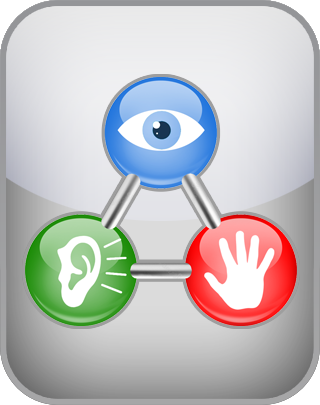Academically reviewed by Dr. Matthew Arthur-Gray, Ed.D.
Learning Styles Test
Learning Styles refer to a range of theories that account for differences in an individual’s preferred way of learning. Although there is ample evidence that individuals express personal preferences for how they prefer to receive information, there is no one dominant theory of Learning Styles. This test tests you according to the classical framework of auditory, kinesthetic, and visual learning styles.
The theory of Learning Styles enjoys considerable popularity among educators, with many teachers using it in the classroom to help young people discover how best to succeed in life.
What is your learning style? For each of the following questions, indicate your answer below.
Question 1 of 18
If one day you go for a walk on the beach, what will you primarily focus on?
NEXT
The IDRlabs Learning Styles Test was developed by IDRlabs.
The test measures traits such as the following:
Input describes the way you best learn from your surroundings. The learning style you use to understand Input will have a great influence on how you perceive the information you get from your surroundings.
Processing describes your preferred learning style for processing information. You can have an inner dialogue (auditory), reflect on what sensations the information evokes in you (kinesthetic), or form an inner image of the information you are processing (visual).
Output is the learning style you prefer to use when imparting information to others. You can show something (visual), say something (auditory), or do something (kinesthetic).
Visual learners process best by use of sight. They retain information better when it is visually demonstrated; tend to benefit from figurative language and visual aids such as pictures, videos, and diagrams. This learning style is centered on imaging. When a visual person is learning, they predominantly see different things; they pay attention to colors, how things look, and so on. It is, therefore, a great advantage if they can be shown pictures or videos or have matters described to them in figurative language.
Auditory learners can best understand information by sound. They retain information better when it is processed through hearing. Auditory learners benefit from spoken instruction and other sound-centered aids. Reading aloud or reciting central concepts is often of great help to them. Podcasts, verbal analogies, and speeches are consequently at the center of this style. When an auditory person is learning, they predominantly focus on words and sounds. They often think in sequences and decipher meaning through sequences and procedures, not unlike the way a string of words comes together to form a sentence.
Kinesthetic learners grasp information the best by way of physical motion and by engaging their emotions and bodily states. They predominantly remember what they have physically experienced or touched, as opposed to what they have seen or heard. Kinesthetic learners often enjoy approaching a body of information through tangible activities such as games, concrete exercises, or physically assembling or disassembling things.
As the publishers of this learning styles test, which allows you to screen yourself for the signs of being a visual, auditory, or kinesthetic learner, we have strived to make the test as reliable and valid as possible by subjecting this test to statistical controls and validation. However, free online quizzes such as the present learning style test do not provide professional assessments or recommendations of any kind; the test is provided entirely “as-is.” For more information about any of our online tests and quizzes, please consult our Terms of Service.

